Lumos captures patient experiences to shed light on health futures.
What happens next? That’s one of the most common questions that General Practitioners hear from their patients after they have been diagnosed with a serious health condition.
An ongoing $1.1 million DHCRC project between the Western Sydney Primary Health Network (WentWest), NSW Ministry of Health and the University of Technology, will deliver detailed, evidence-based information about what typically happens next, for patients in the NSW Health system.
“The research team will develop a mathematical framework of what happens to people after a GP or hospital emergency room visit, capturing all the possible pathways that people take through the health system,” says Professor Barry Drake, co-Chief Scientist at the Digital Health CRC and a lead investigator on the project.
This framework will identify the different pathways people take and the outcomes from these, and then ‘train’ mathematical models that can be used to support clinical decisions across care settings such as GP and outpatient clinics and hospital emergency departments.
The project uses the NSW government’s Lumos program, a data linkage initiative that combines consumer data from hundreds of participating General Practices across all ten Primary Health Networks in NSW, with data from hospitals and other health settings including ambulance and emergency departments across the state.
What’s Lumos?
Lumos began as a pilot in 2016 and now links the de-identified records of over two million people, so that it is possible to map patient journeys between different health care settings in NSW, over the past decade.
“As Australia’s population is ageing, and rates of many chronic conditions are rising, we need information that will support co-ordinating the care people receive across different settings so they get the right care at the right time, and we can meet their needs more efficiently,” says Patty Correll, Lumos Program Manager and the Principal Epidemiologist, Systems Integration at the NSW Ministry of Health.
“More than anywhere, general practice is our first point of contact with health services, yet in Australia there is nowhere that consumer health care data from general practices is brought together with other healthcare data.” She says information about the care that patients receive and the outcomes that they experience is fragmented.
Lumos brings together ‘whole of system’ information, giving a comprehensive view of patients across the continuum of care, and helping to identify the best situations and times to intervene or influence health care practices to improve patient outcomes, patient experiences, and the efficiency of health services.
The program fits the NSW state-wide value-based care initiatives that aim to transform the NSW health system to deliver person-centred, seamless, efficient and effective care, particularly for people with complex, long term conditions, and also highlights ways that collaboration across the health system can achieve better patient outcomes.
Reports delivered from Lumos have helped general practices to better understand how their patients use other services and to take actions such as improving processes to reduce unnecessary emergency department visits (for example by introducing early-morning walk-in clinics).
The program was featured in the latest issue of BMJ’s Integrated Healthcare Journal, which reports that the first program data extraction found that the demographic distribution of patients in Lumos aligned to that of the NSW population by more than 95 per cent in the calculated measures of representativeness.
What will the project do?
Professor Drake says that the project team will use Lumos data to build mathematical models, or algorithms, to map different patient journeys, and build predictive tools.
For example, based on current data, he says that patients who see their GP within seven days of being discharged from hospital have lower rates of preventable hospital readmissions.
“We can address very nuanced questions about cohorts within the population, look at the typical patient journeys for people, and what their outcomes are statistically more likely to be, for these different journeys,” he says.
“We’ll be able to show the crucial transition points in people’s journeys, highlight what drives those transition points, and show where people shift to a different trajectory.”
The researchers will build software tools so NSW Health leaders can focus on different cohorts of interest as the Lumos data evolves and grows, he says.
Lumos data is securely contained in a data storage system called the Secure Analytics Primary Health Environment (SAPHE) with strict access controls to ensure patient privacy is protected to the highest standards.
The software tools from this project will become valuable instruments to support clinical decisions by health professionals about the best ‘next steps’ for their patients.
What are the benefits to consumers, clinicians and the community?
Demands on the health system are rising, and governments are under increasing pressure to improve the quality of health care and the experience of both health consumers and providers, while reducing costs.
“This project will help make sense of large numbers of complex journeys, and then use massive patient journey data to provide decision support technology,” says Professor Drake.
The project will build predictive models that can be used to understand individual patient pathways as they unfold in time, showing likely interactions with the health system.
“We realised that to prevent duplication of services, and to stop people falling through the gaps, we needed to develop local partnerships that make better use of information resources that we have already,” says Ms Correll.
The project also provides an evidence base for the NSW Health Collaborative Commissioning initiative and will work in parallel with and complement other initiatives in the value-based healthcare space.
“Value-based healthcare needs information about past and future patient pathways across acute and community settings, so we can work out why patients and clinicians make certain health care choices and at what point in the patient journey these important health care choices get made,” says Ms Correll.

